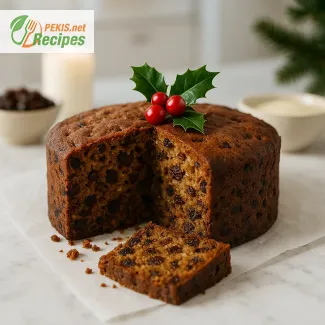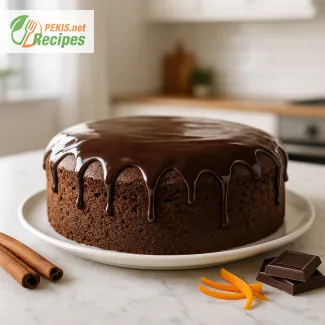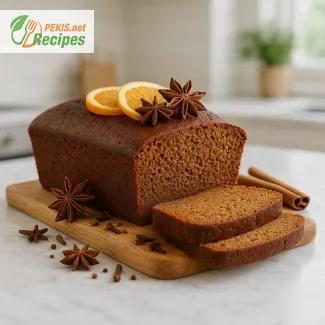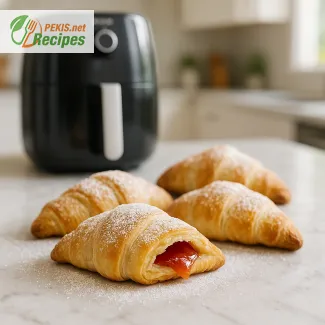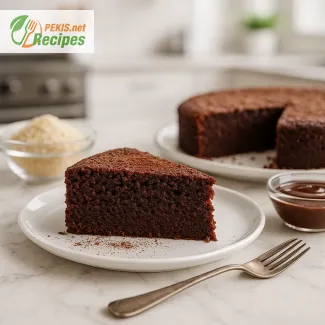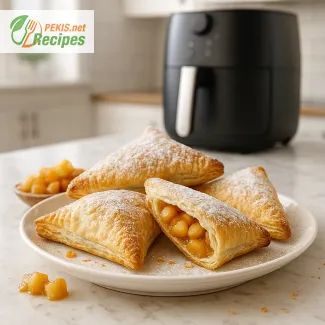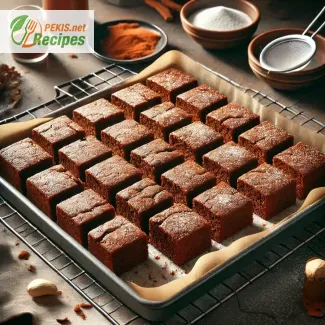
Spice gingerbread, a timeless classic that brings together the best of comforting flavors and tantalizing aromas, is a holiday favorite. This delightful baked treat is more than just dessert; it’s an invitation to warmth, coziness, and festive cheer. The rich blend of spices, often including ginger, cinnamon, nutmeg, and cloves, infuses every bite with a complex flavor profile, creating a harmony that tantalizes the taste buds and ignites nostalgia.
The allure of spice gingerbread lies in its perfect balance between sweetness and spice. The key ingredient, ginger, lends a bold and aromatic warmth, with each bite delivering a gentle heat that intensifies the cake’s other flavors. This natural pungency of ginger isn’t just flavorful; it also boasts health benefits—ginger is known for its anti-inflammatory properties and digestive benefits, making each bite of gingerbread a warm indulgence with a touch of wellness. Complementing the ginger is cinnamon, which adds its sweet warmth, creating an inviting aroma that fills the home. The inclusion of nutmeg and cloves adds depth, with nutmeg’s slightly nutty, sweet notes, and cloves' intense, almost peppery undertone, rounding out the flavor in ways that linger on the palate.
This spice-infused cake holds a rich history. Originating centuries ago, gingerbread has evolved from a humble medieval treat to an iconic holiday symbol. Traditionally baked in loaf or cake form, spice gingerbread was a centerpiece for festive gatherings, admired for its deep, dark color and moist, tender crumb. Today, it has retained its popularity, especially during the colder months when its flavors feel especially comforting and seasonal. The dark molasses or honey often used in the batter not only adds a distinctive flavor but also gives the gingerbread its signature depth and color. This darkness symbolizes the richness and complexity of the dessert, with a sticky sweetness that enhances the spices.
Spice gingerbread is also incredibly versatile. It can be baked into soft, moist cakes or chewy, slightly crisp cookies, appealing to a range of tastes and textures. Pair it with a light dusting of powdered sugar for a minimalist touch or a drizzle of sweet, tangy icing that contrasts beautifully with the cake's bold flavors. A dollop of whipped cream or a scoop of vanilla ice cream can add a creamy contrast, highlighting the warmth of the spices and the subtle sweetness of the gingerbread.
Beyond its delightful flavors, spice gingerbread is a sensory experience. The aroma of spices mingling in the oven is captivating, filling the room with a welcoming warmth that feels like a cozy embrace. For those who enjoy baking, the satisfying process of mixing spices, smelling the molasses as it combines with flour and butter, and witnessing the cake rise in the oven evokes a connection to traditional holiday baking rituals. It’s a process that speaks to the senses and soul, bringing people together in a shared appreciation of a homemade delicacy.
This dessert isn’t just a treat for the holiday season; it's comfort food at its finest. Whether served warm on a chilly evening or enjoyed as a mid-day snack, spice gingerbread embodies the spirit of indulgence with a touch of tradition. It’s a dessert that pairs beautifully with warm beverages like spiced tea, mulled cider, or even a classic latte, enhancing the overall experience of cozy warmth. In a world where trends come and go, spice gingerbread remains a staple, offering a familiar taste that many look forward to year after year.
Embrace the warmth of spice gingerbread and let its flavors transport you to a place of comfort, nostalgia, and seasonal joy.
- Preheat the oven: Preheat the oven to 175°C (350°F). Grease a 23 x 23 cm (9 x 9 inch) baking pan and line with parchment paper.
- Mix wet ingredients: In a large mixing bowl, combine the sunflower oil, molasses, and granulated sugar. Whisk in the whole milk and eggs until smooth.
- Combine dry ingredients: In a separate bowl, sift together flour, ground ginger, cinnamon, nutmeg, cloves, baking powder, baking soda, and salt.
- Combine wet and dry mixtures: Gradually fold the dry ingredients into the wet mixture, stirring until just combined. Do not overmix.
- Pour and bake: Pour the batter into the prepared baking pan and smooth the top with a spatula. Bake for 35-40 minutes or until a toothpick inserted in the center comes out clean.
- Cool and serve: Allow the gingerbread to cool in the pan for about 10 minutes, then transfer to a wire rack to cool completely. Slice and serve.
Creating the perfect spice gingerbread involves more than just following a recipe—there are numerous tips and adjustments that can elevate the flavors, texture, and overall enjoyment of this traditional treat. With careful attention to ingredients and techniques, it’s possible to make each bite even more memorable, suit dietary needs, or explore flavor variations. Here are some professional tips and modifications for enhancing your spice gingerbread:
1. Choosing and Adjusting Ingredients for Flavor and Texture
- Molasses Choices: Molasses adds both color and depth to spice gingerbread. For a stronger flavor, use dark molasses, which provides a richer taste and darker color. If you prefer a milder flavor, choose light molasses. Avoid using blackstrap molasses, as it can be overly bitter and overpower the spices.
- Sugar Variations: While granulated sugar is standard in this recipe, consider replacing part of it with brown sugar for added moisture and a caramel-like undertone. Light brown sugar will give a more subtle effect, whereas dark brown sugar will increase the intensity of the flavors.
- Fat Options: The recipe calls for sunflower oil, which provides a neutral taste and keeps the gingerbread moist. If you’re looking for a more buttery flavor, substitute half the oil with melted butter. Keep in mind that butter will result in a slightly denser texture.
- Spice Levels: The blend of ginger, cinnamon, nutmeg, and cloves gives spice gingerbread its signature warmth. Adjust these spices to suit your taste:
- For extra ginger warmth, add an additional ½ teaspoon of ground ginger or incorporate freshly grated ginger for a more intense, zesty flavor.
- Increase the cinnamon by up to ½ teaspoon if you enjoy a more pronounced cinnamon flavor.
- For added depth, try adding a pinch of allspice or cardamom to complement the ginger and cinnamon, especially if you want a complex, aromatic profile.
2. Enhancing Moisture and Tenderness
- Adding Applesauce or Yogurt: For an even moister texture, add 60 ml (¼ cup) of applesauce or plain Greek yogurt. Both add natural sweetness and moisture without changing the flavor drastically. This can be particularly helpful if you want to reduce the oil slightly without compromising on texture.
- Using Buttermilk Instead of Milk: Buttermilk adds a tangy undertone that complements the spices well and helps create a more tender crumb. If you don’t have buttermilk, you can make a quick substitute by mixing 1 tablespoon of vinegar or lemon juice with 240 ml (1 cup) of milk and letting it sit for 5 minutes before adding it to the batter.
3. Making It Gluten-Free or Vegan-Friendly
- Gluten-Free Adaptation: For those avoiding gluten, replace the all-purpose flour with a gluten-free baking blend that includes xanthan gum, which helps with structure. Ensure the blend is specifically designed for baking to retain the gingerbread’s soft and slightly chewy texture.
- Egg-Free Substitutes: To make this recipe vegan, substitute each egg with a flax egg (1 tablespoon ground flaxseed mixed with 3 tablespoons of water) or unsweetened applesauce (¼ cup per egg). Both substitutions will add moisture, but applesauce will lend a slight sweetness as well.
- Dairy-Free Options: Replace milk with almond milk, oat milk, or coconut milk for a dairy-free gingerbread. Almond milk adds a subtle nutty flavor, while coconut milk adds richness.
4. Optimizing Baking Techniques for Best Results
- Sifting the Dry Ingredients: Sifting the flour and spices together before adding them to the wet mixture ensures an even distribution of spices and avoids clumps, resulting in a more balanced flavor and lighter texture.
- Avoiding Overmixing: When combining the wet and dry ingredients, stir only until just combined. Overmixing can lead to gluten development, which will make the gingerbread dense and tough rather than soft and tender.
- Baking Time and Temperature: For a perfectly moist gingerbread, ensure that your oven is preheated and keep an eye on the baking time. If you prefer slightly gooey centers, reduce the baking time by 5 minutes. For a crispier edge, bake 5 minutes longer but watch carefully to avoid overbaking, which can lead to dryness.
5. Customizing the Gingerbread’s Flavor Profile
- Adding Citrus Zest: For a bright contrast to the warm spices, add the zest of an orange or lemon. Citrus zest adds a subtle acidity that balances the rich molasses and enhances the spice flavors, giving the gingerbread a unique twist.
- Incorporating Nuts or Dried Fruit: Chopped nuts, such as pecans or walnuts, can be folded into the batter for added texture and a nutty flavor that complements the spices. Dried cranberries or raisins can also be added for bursts of sweetness and texture.
- Alcohol-Infused Variation: For a grown-up version, add a splash (1-2 tablespoons) of dark rum or brandy to the batter. The alcohol will evaporate during baking but leave behind a rich aroma and depth that pairs well with the spices.
6. Serving and Presentation Tips
- Dusting with Powdered Sugar: A light dusting of powdered sugar enhances the appearance and adds a touch of extra sweetness. Dust the gingerbread just before serving for the best visual impact.
- Glaze or Icing Drizzle: For a more polished look, drizzle the gingerbread with a simple lemon or vanilla glaze (made with powdered sugar, a splash of milk, and lemon juice or vanilla extract). The tangy glaze contrasts with the gingerbread’s warmth, creating a visually appealing and flavorful finish.
- Whipped Cream or Ice Cream Accompaniments: Spice gingerbread pairs beautifully with a dollop of whipped cream or a scoop of vanilla or cinnamon ice cream. These creamy accompaniments balance the spices and create a well-rounded dessert experience.
7. Nutritional and Health Considerations
- Reducing Sugar: If you’re looking to reduce the sugar content, you can lower the granulated sugar by up to 50 grams without sacrificing too much sweetness. Additionally, using natural sweeteners like honey or maple syrup in place of a portion of the sugar can add flavor complexity while slightly lowering the glycemic impact.
- Boosting Fiber Content: Add 1-2 tablespoons of ground flaxseed or chia seeds to the batter for a small fiber boost. These superfoods will add subtle nuttiness and help slow digestion, making the gingerbread slightly more filling.
- Healthier Flour Alternatives: For a slightly higher fiber content, replace up to 25% of the all-purpose flour with whole wheat or spelt flour. This change adds a subtle nuttiness and pairs well with the gingerbread spices without drastically altering the texture.
8. Storing and Freezing Gingerbread
- Storing for Freshness: Store spice gingerbread in an airtight container at room temperature for up to 3 days. The flavors actually deepen after a day, making it even more enjoyable when slightly aged.
- Freezing for Later Enjoyment: Spice gingerbread freezes exceptionally well. Wrap individual portions tightly in plastic wrap, then in aluminum foil, and store in a freezer-safe bag for up to 3 months. To enjoy, simply thaw at room temperature or warm in the oven for a few minutes.
With these expert tips and variations, you can make spice gingerbread truly your own. By experimenting with ingredients, adapting the recipe for dietary needs, and enhancing flavors, you’ll transform this traditional treat into an unforgettable culinary experience.
Contains gluten (from all-purpose flour) and eggs. Replace with gluten-free flour mix and egg substitute (such as flax eggs or applesauce) to make it allergen-friendly.
- Vitamin B6: 0.1 mg - Supports immune function and metabolism.
- Calcium: 50 mg - Essential for bone health.
- Iron: 2 mg - Vital for red blood cell production and oxygen transport.
- Potassium: 150 mg - Assists in muscle function and heart health.
- Gingerol (from ginger): Natural anti-inflammatory, aids in digestion.
- Polyphenols (from cinnamon): Antioxidant properties, helps reduce oxidative stress.
